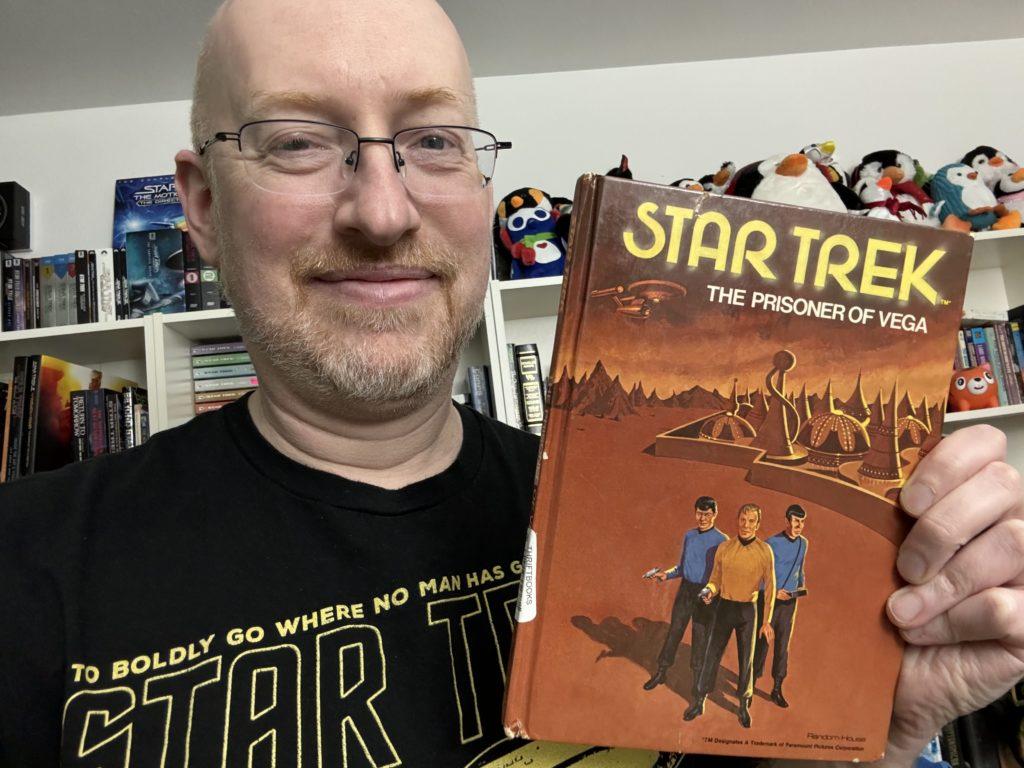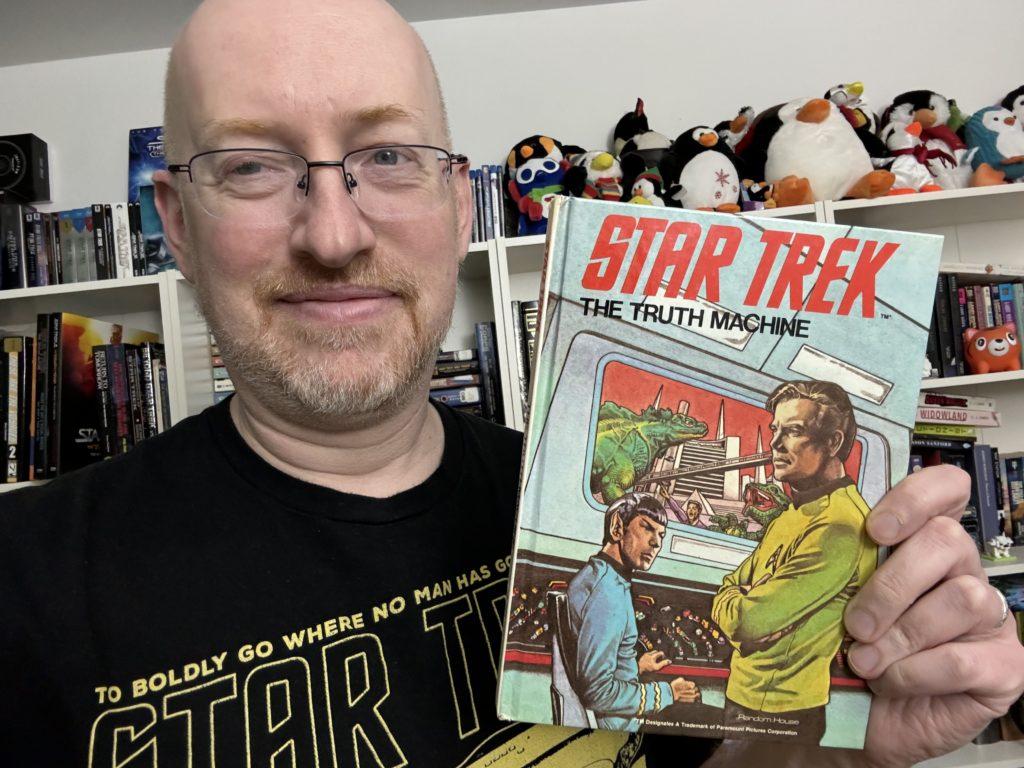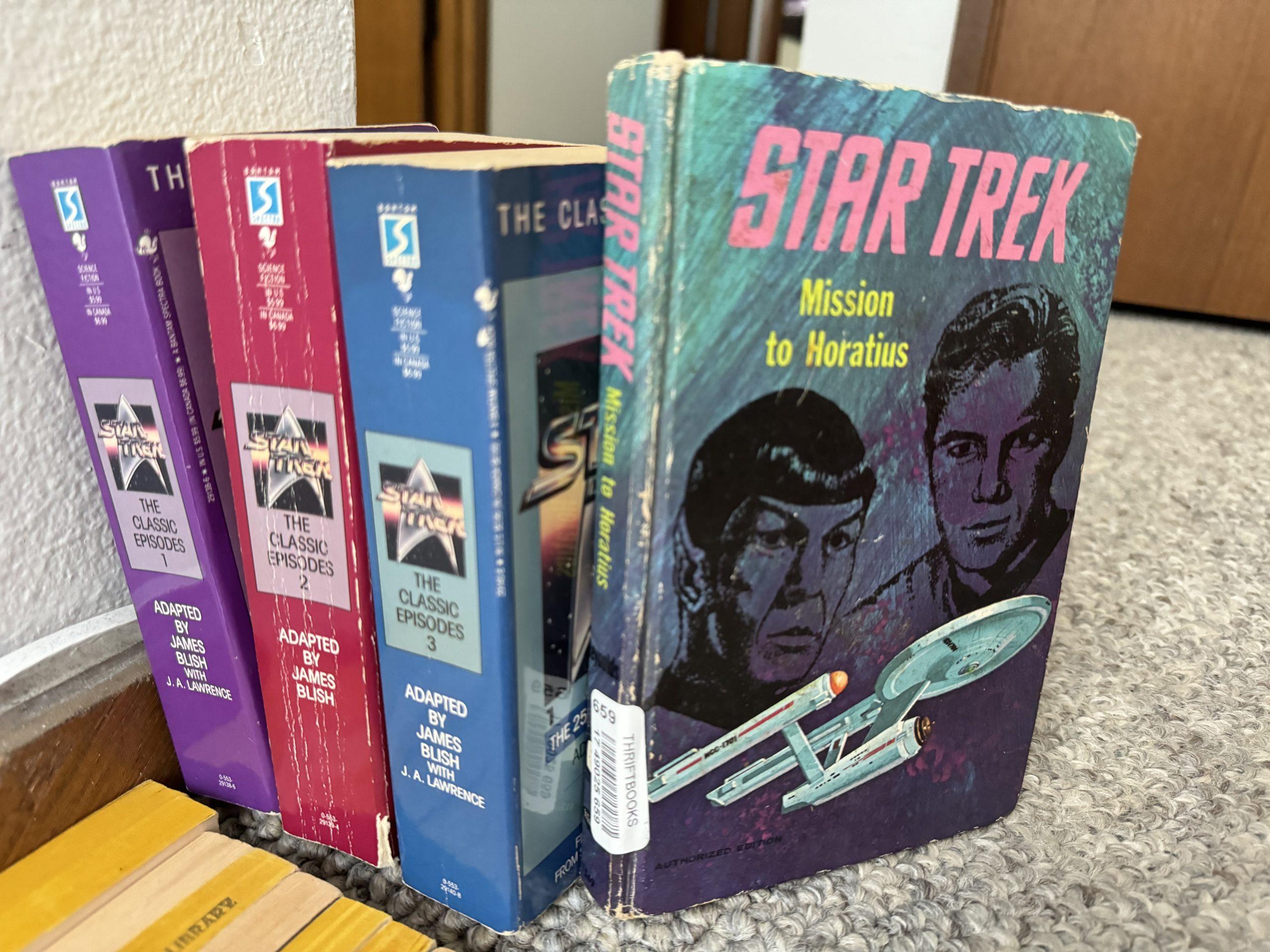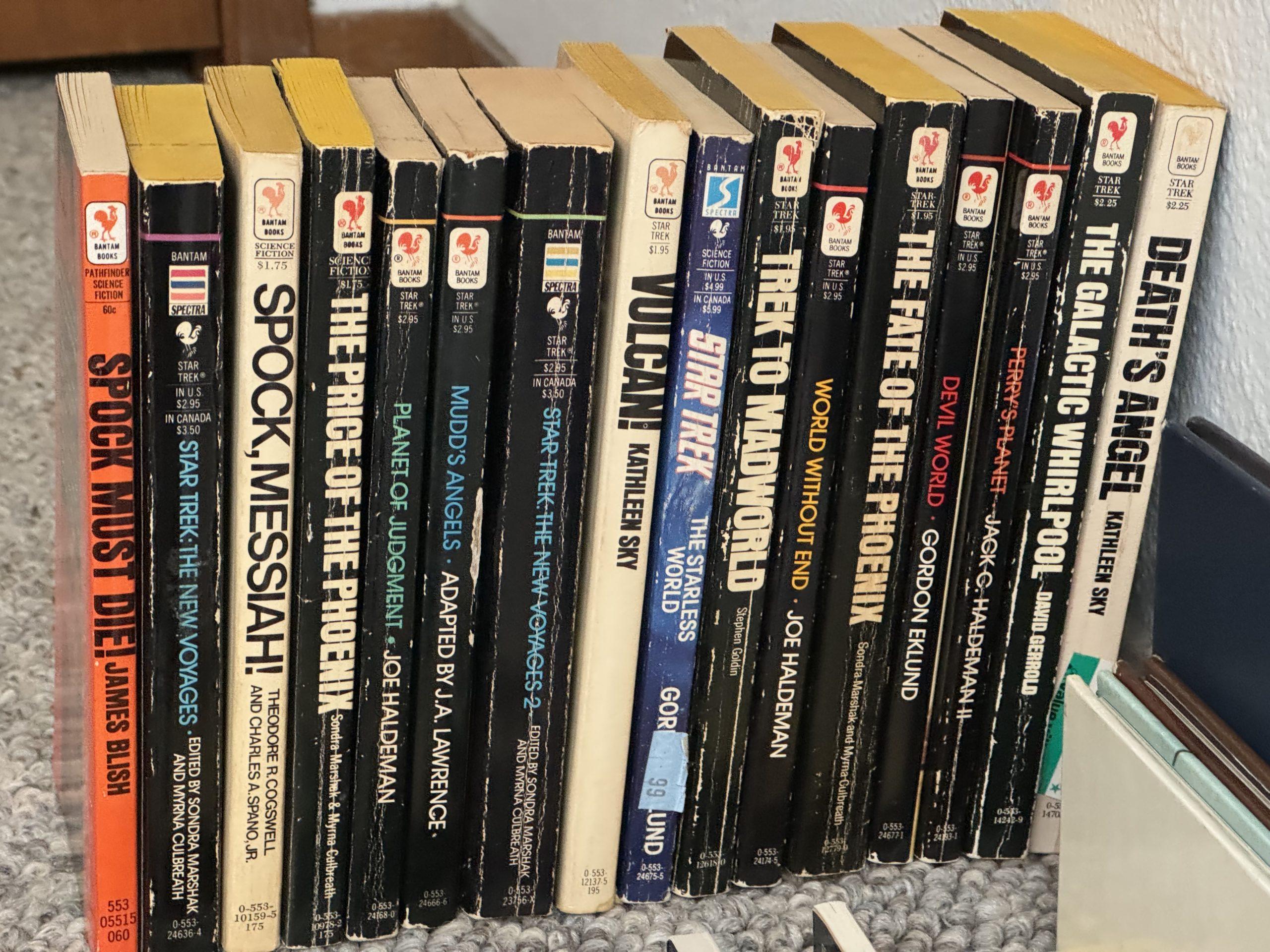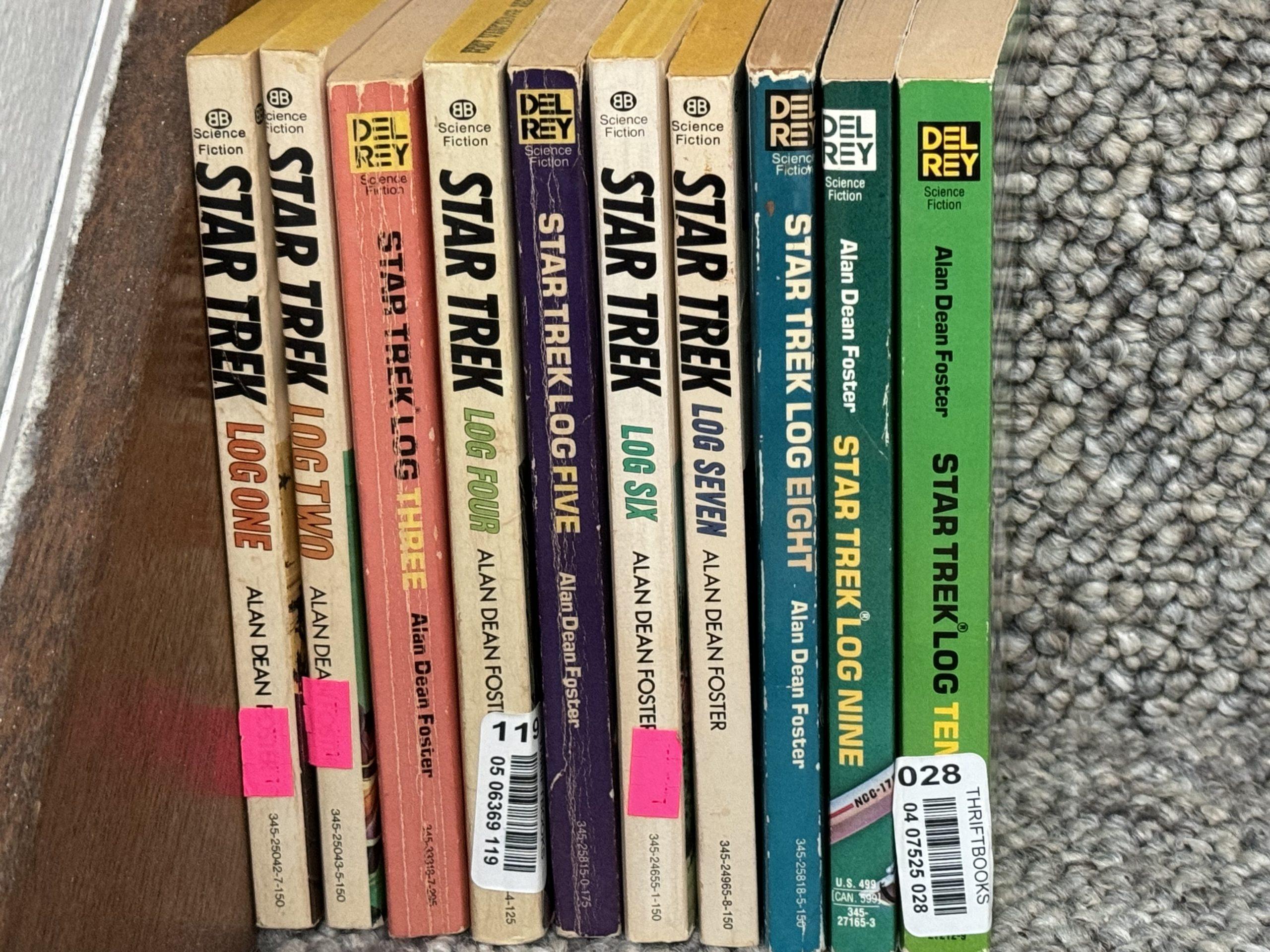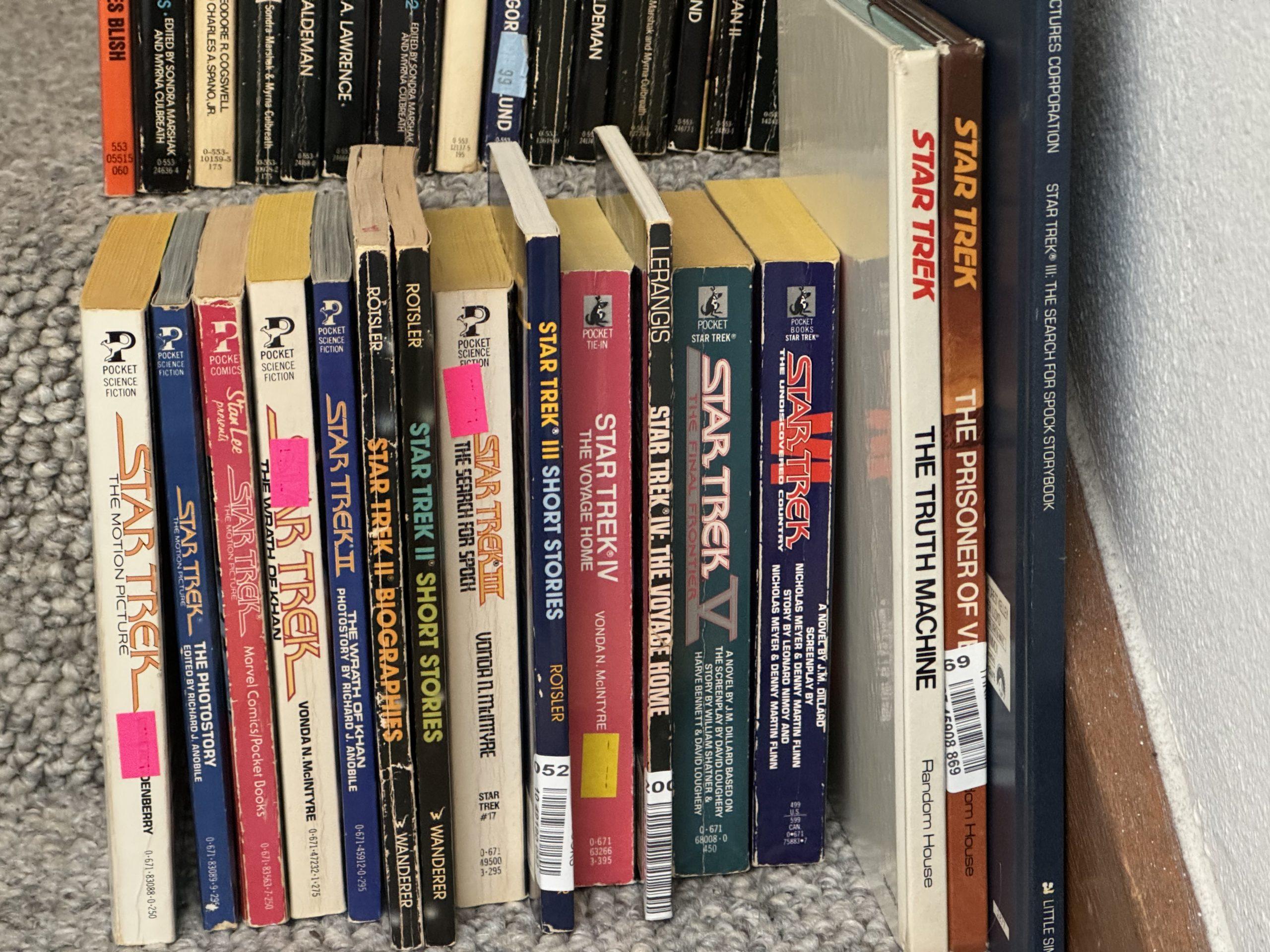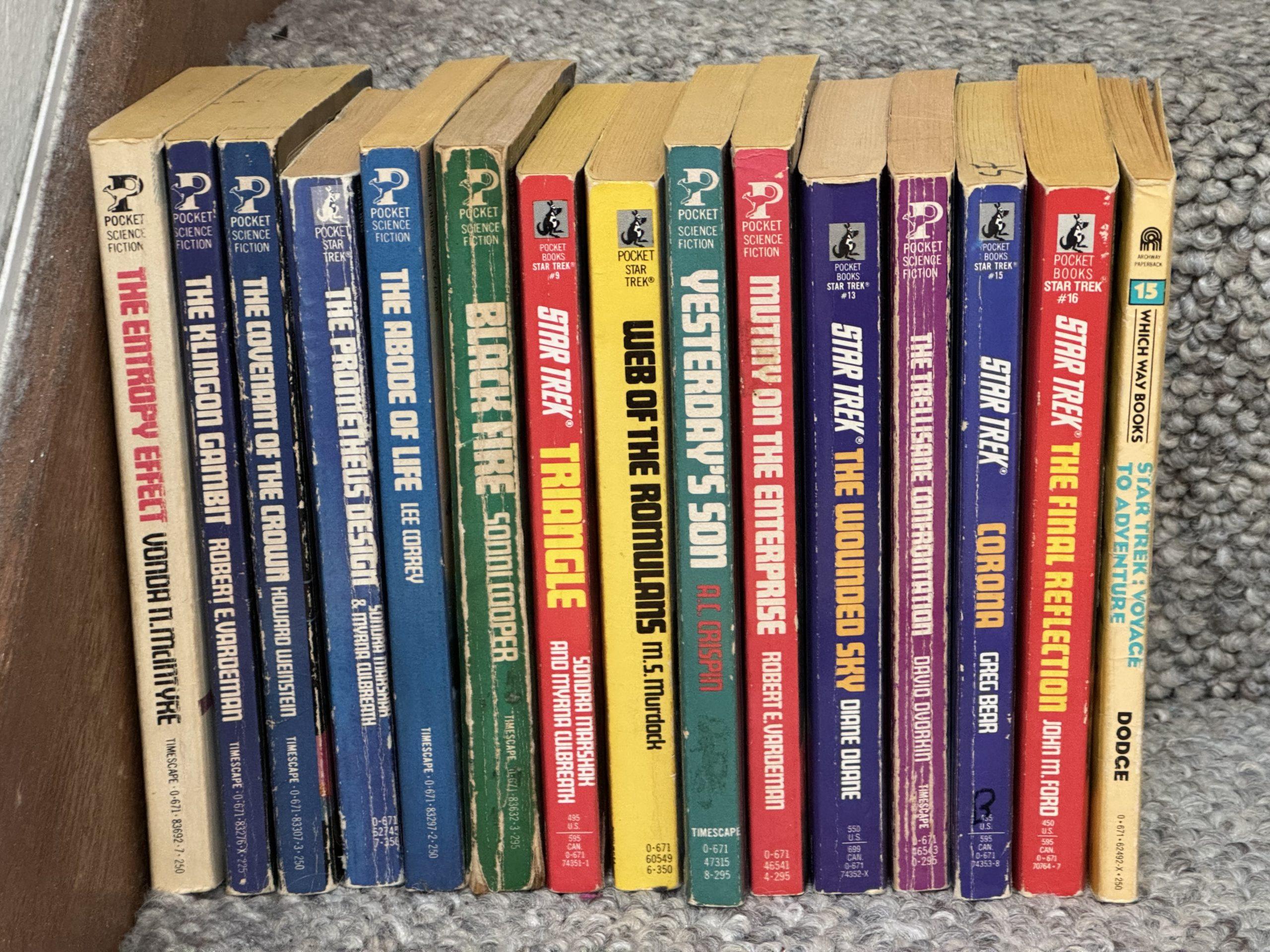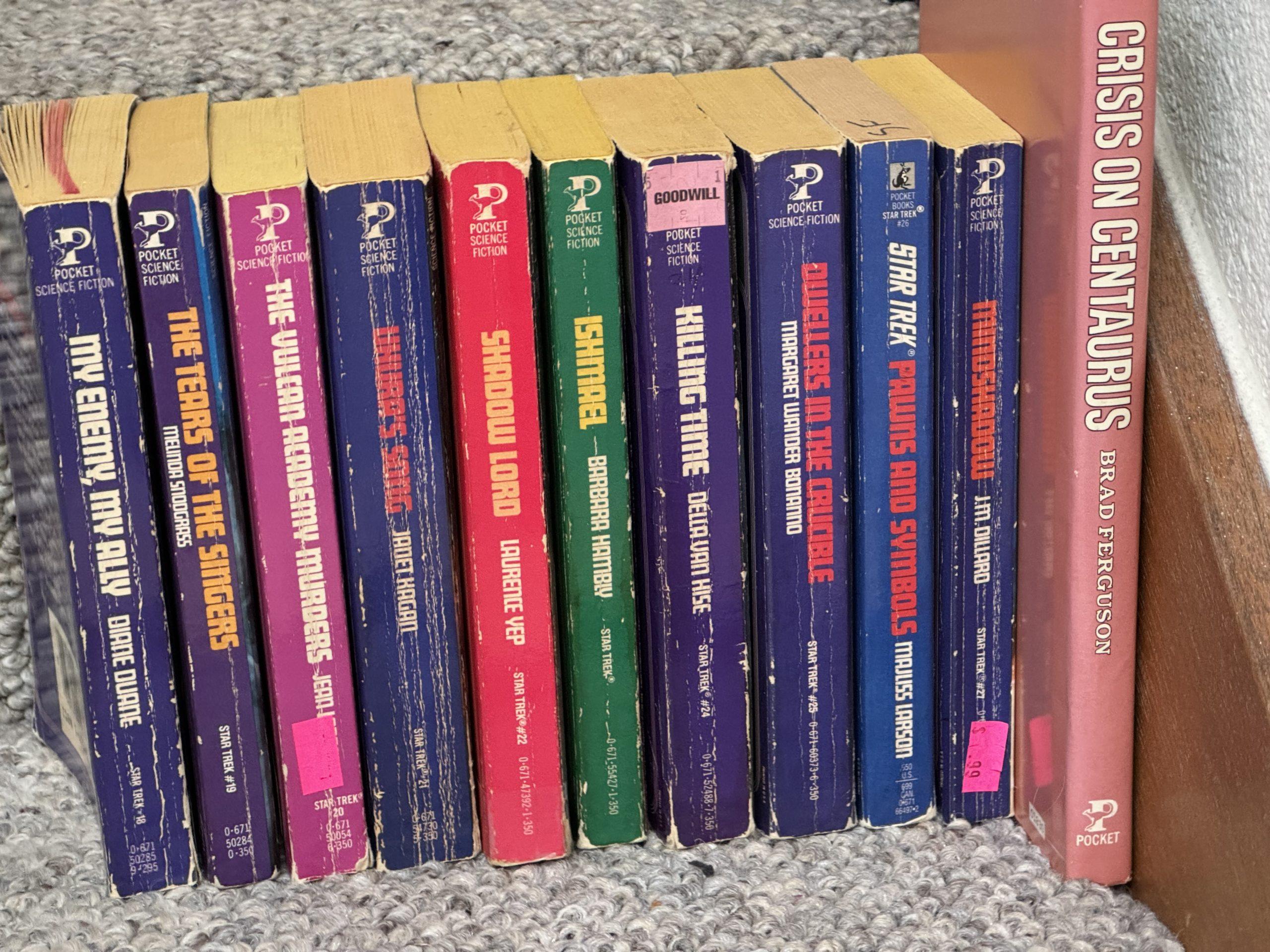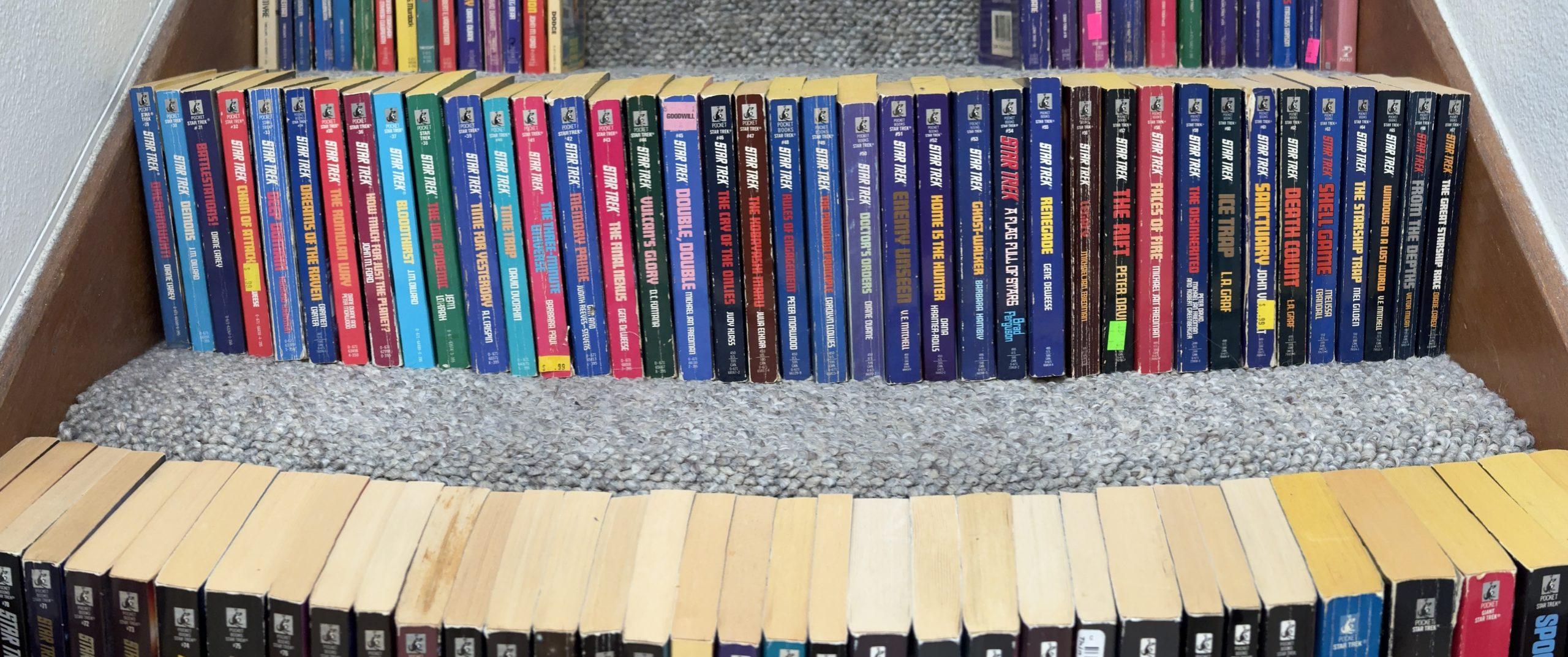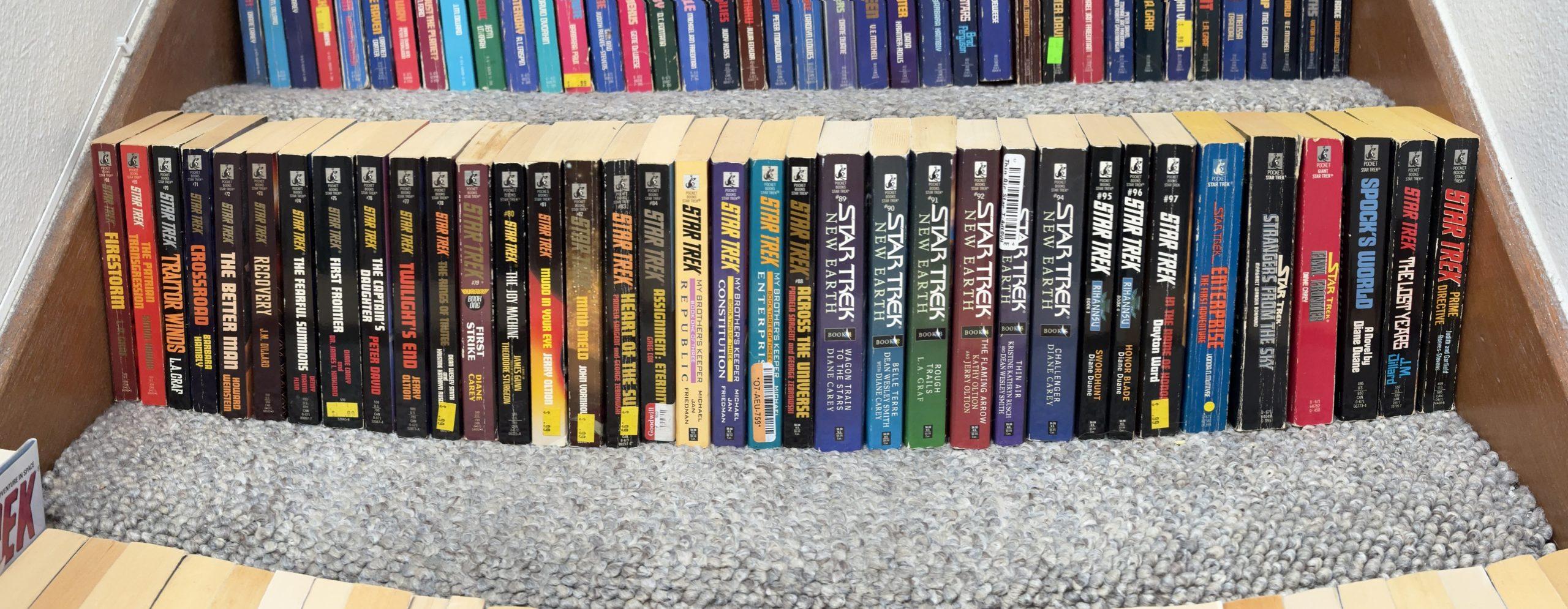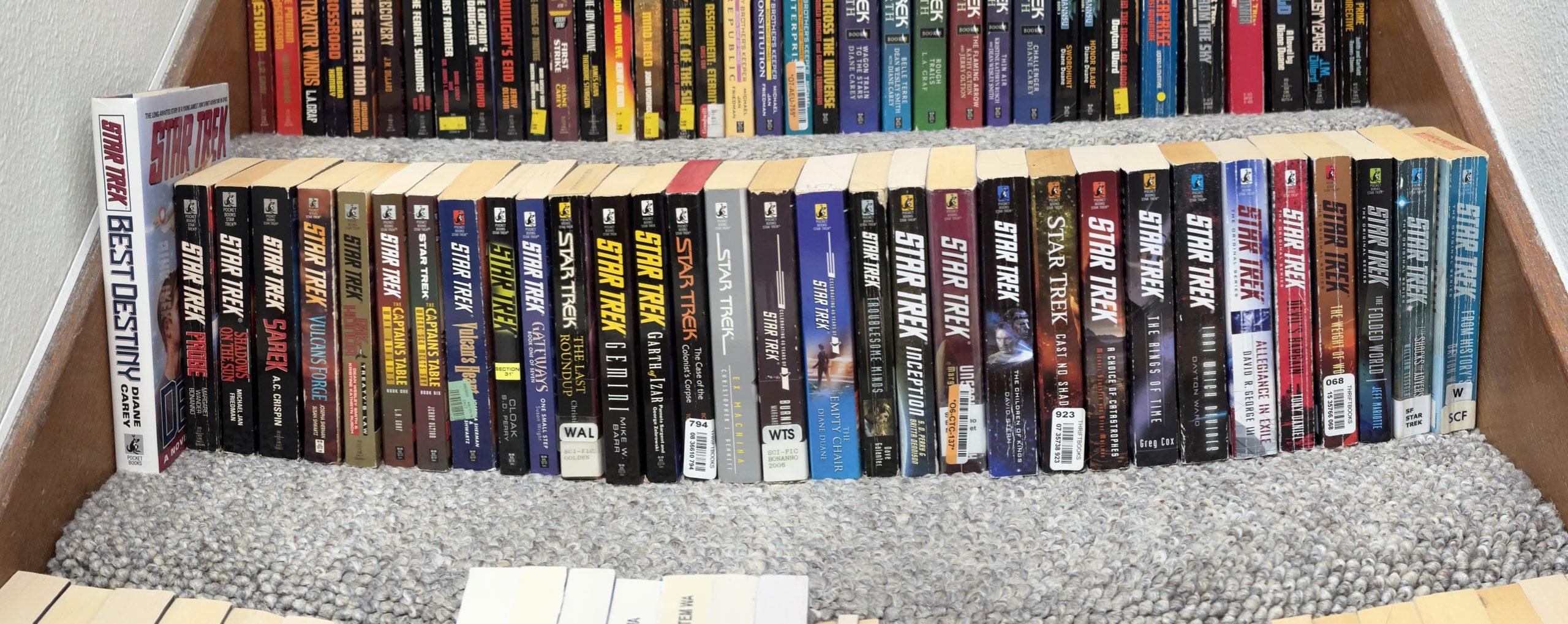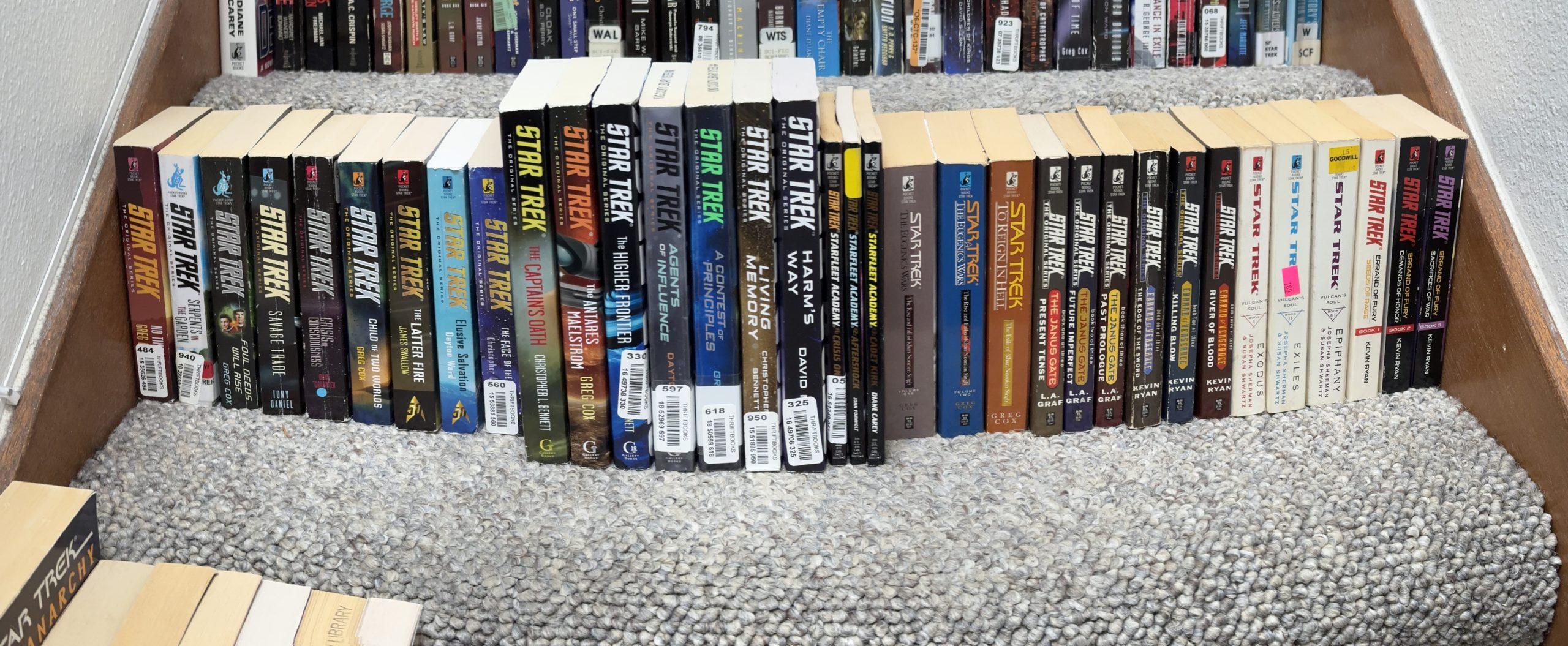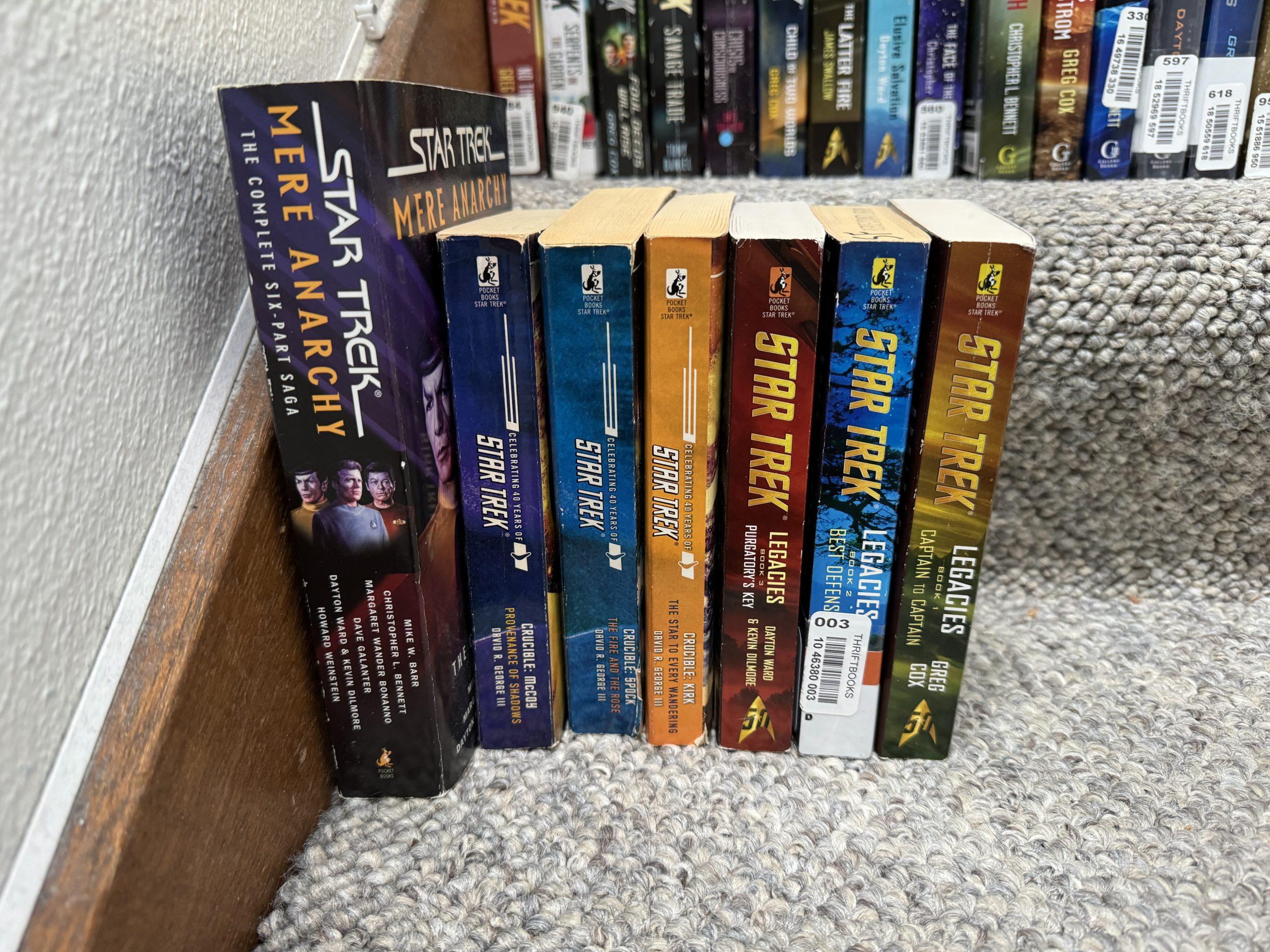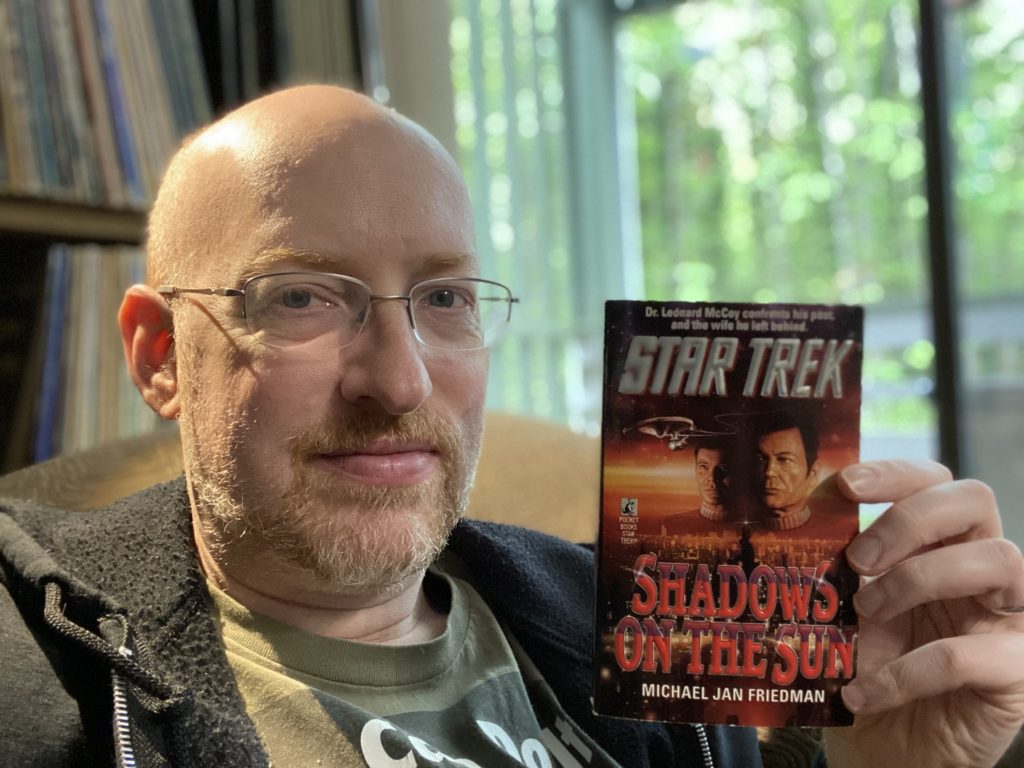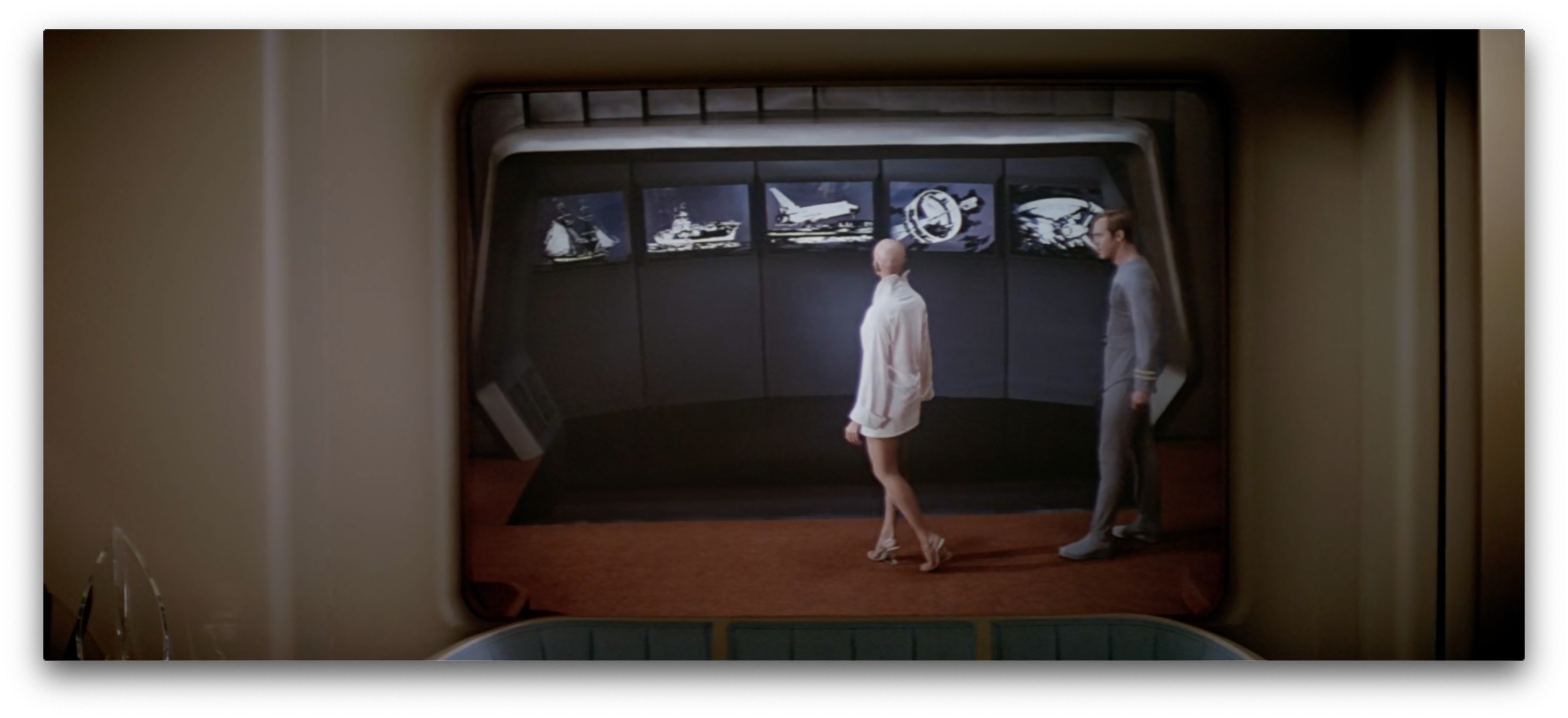Occasionally in Star Trek — at least twice that I can easily think of, possibly other times — we are shown displays of prior ships named Enterprise. The first time this happens, in Star Trek: The Motion Picture, this display includes the first space shuttle.
(The second time I can easily come up with is the display cabinet in the observation lounge on the Enterprise-E in First Contact, but that display jumps directly from the aircraft carrier to the first appropriately named starship. A shuttle model is seen on display in Star Trek Into Darkness, but that’s contained in a lineup of notable space exploration milestones, not of ships of a specific name, so that passes — except for the fact that that entire film should be struck from the Trek canon, but I digress….)
However, since the Star Trek universe wouldn’t include the fictional Star Trek universe, the shuttle shouldn’t be included in these displays. The first space shuttle was originally planned to be named Constitution, but the name was changed to Enterprise after a campaign spearheaded by fans of the show.
Now, the Enterprise is a Constitution-class starship, but in ST:TMP, Decker specifically tells Ilia that “all those vessels were called Enterprise”, so it still wouldn’t make sense for the shuttle to be part of that display, and there was no known Constitution-class ship actually named Constitution that might have included a display with a shuttle named Constitution. There was, however, a shuttle named Discovery, so the Discovery in the current show could have such a display. But the Enterprise shouldn’t have the shuttle included in its historical lineage (unless, of course, a suitable in-universe explanation was given for why the first shuttle had its name changed).
Taken more broadly, there are other potential implications for Trek not existing within its own universe. Roddenberry either never created a hit science-fiction show in the ‘60s, or did so in a very different manner. Shatner, Nimoy, Kelley, and the rest of the TOS crew wouldn’t be the household names they are, or at least not for the roles we primarily know them for.
Many scientists have credited Trek for inspiring them on their path to their chosen careers. What paths would they have taken without Trek? How would our technological progress have been affected without Trek as an inspiration, given how many of today’s devices, from flip phones (communicators) to iPads (PADDs), have been inspired in some manner by Trek’s visions of the future?
I’m not really going anywhere major with this. I just like playing with what fictional universes are like when you remove them from their own universe.
